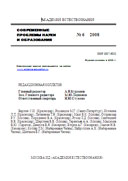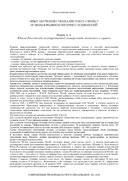PDF-версия статьи


|
Nowadays, the conventions for e-correspondences are naturally even less developed than those for letters and faxes. There is little research as yet on e-correspondence in general, and especially now that they are increasingly appearing in external as well as internal communications, more research is needed on the language and practices of this new method of communication between people.
E-correspondence has also been the object of non-academic research in the educational guides which accompany the purchase of internet software. These kinds of publications downplay the generic significance of e-mail, because it is perceived as easy to use and therefore needing little instruction. The significance of this situation for a study of the generic properties of e-correspondence that e-corresponders appear to derive their models of use, and also their style and language, from their knowledge and experience of related, pre-existing genres, which could be called “companion genres”, such as letters and memorandums. From this, it follows that the e-correspondence genre uses features from number of these generic sources rather than being pure genre.
This study assumes that texts exchanged via e-resource are socially important verbal actions and that their language has a major role to play in ensuring that the acts are performed well. In this respect we fully agree with Miller’s and Bakhtin’s assumptions about genres:
1 that genre study allows consideration of the interplay of the social, institutional and technological factors which influence the discursive practices and outcomes of communication;
2 that people participate in genre usage rather than control it;
3 that one genre exists alongside with others and is influenced by them;
4 that regularities of form and substance within a genre arise, become established conventions, and influence all aspects of the communication [1; 2].
However, genres are dynamic entities and they can be adapted to changing circumstances.
As history indicates, e-mail original application was speedy data information exchange. The fast rate of this growth over a short period has meant that its users have had no knowledge in practice methods and learned to use it by attending short training courses, by trial and error or though a manual.
Minimalism of brevity in language use is becoming the preferred style for e-mail messages probably because of the historical foundations of computer mediated communications, which lie in the efficient and speedy exchange of information. Minimalism can either be disadvantage or an advantage in terms of information exchange, depending on the needs of the receiver. Some brevity is just omission of some kind, such as of the specifics of subject matter or qualifications of opinion or act. If this correctly predicts the knowledge of the reader, it makes sense, and the fit between the sender’s and the reader’s understanding of it means that the omission is hardly noticed and is unproblematic.
Thus, in addition to the remaining e-correspondence and its specific terminology, there is a lot for us teachers to do. We are the bridges between static textbook examples and the dynamic environment of e-correspondence. To conclude, there is an interesting comment of one of the respondents: “The language does not have to be perfect or even correct, but it has to be understandable. Otherwise it can create a lot of problems.”
Bibliography
1. Miller C. R. Genre as Social Action//Quarterly Journal of Speech. – 1984. – № 70. – Р. 151-167.
2. Бахтин М.М. Проблема речевых жанров//Бахтин М.М. Литер.-критич. статьи.- М.: Художественная литература, 1986.
ОПУБЛИКОВАНО
Gulshat K. Zhumagulova, Anzhela B. Baimakhanova E-STYLE AS A WRITTEN TRANSFER OF ORAL SPEECH. // Современные проблемы науки и образования - 2012.-№6. (приложение "Филологические науки"). - C. 21